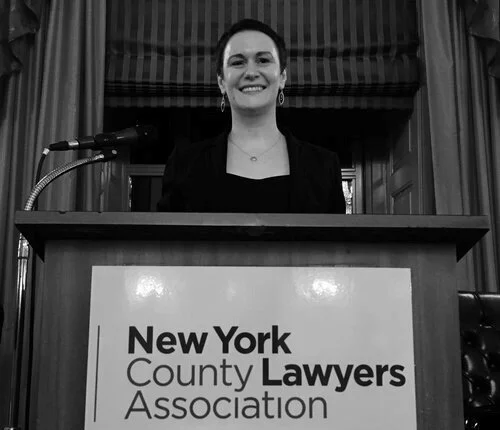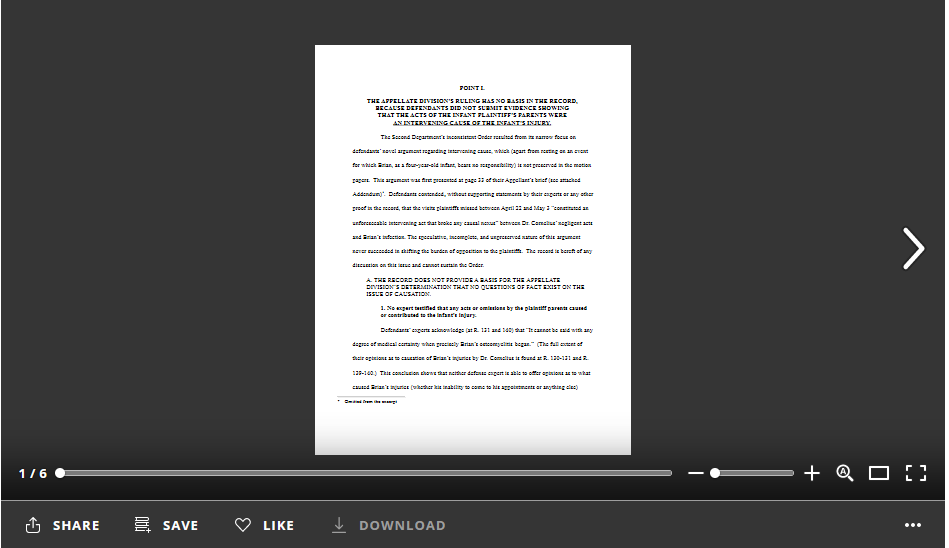Vorträge - Artikel - Schriftsätze
Vorträge
Auswahl an Vorträgen und Schulungen
From Britannia to The Autopsy Table: The Right of Sepulcher in the US (video here), CLE, Marino Legal Academy, November 2018
Empathy for the Reader: Persuasive Legal Writing in Plain Language, CLE, Lawline, June 2018
No Reader Cares What You Think: Persuasive Legal Writing in Plain Language, CLE, New York County Lawyers Association, April 2018
Points of Style, Small Law Firm Networking Group, New York City Bar Association, April 2018
Top Three Writing Tips, Downtown Lawyers, October 2017
No One Cares What You Think: Persuasive Legal Writing, CLE, Greenberg & Merola LLP, May 2017
Legal Writing for Domestic and International Audiences, Foreign & International Law Committee, New York County Lawyers Association, June 2016
Contingency Planning Basics, Deliberate Solos, June 2016
Artikel
Veröffentlichungen aus den letzten Jahren
Schriftsätze
Wir stellen Ihnen eine Auswahl früherer Arbeiten vor
Appellants' Brief to the
Court of Appeals
This matter involved a four-year-old child (“Brian Waldorf” or the “infant plaintiff”) who contracted a bone infection following allegedly improper treatment of a skin infection by the defendant physician (“Dr. Cornelius”). After completion of discovery, the defendant moved for summary judgment claiming that her treatment was not improper and even if it was, it did not cause the child's injury. The trial court denied the motion, but the Appellate Division, Second Department, reversed on the basis of an argument that the defendant had not raised before the motion court. Our motion for leave to appeal was based on the Appellate Division's mistaken conclusion that while the defendant may have erred in the treatment she provided to the child, the fact that the child's parents did not bring him to a series of followup appointments meant that the error did not cause the injury. After the Court of Appeals granted our motion, we filed a brief explaining that the appellate result was in derogation of a state law that is directly on point, and furthermore that a party may not present new arguments to the appellate court which were never put to the motion court. Our alternative argument – which the Court of Appeals ultimately endorsed – was that the defendant never met her initial burden of proof on a motion for summary judgment, because she did not present evidence to show that she did not cause the plaintiff's injury.
This excerpt shows that the Appellate Division's conclusion regarding lack of causation necessitated expert medical testimony, but no defense expert ever addressed the point.
Summary judgment motion which lead to multi-million dollar settlement
This is an excerpt from an October 2016 motion for summary judgment in a Labor Law § 240 case where a concrete, multi-ton traffic barrier fell from an elevation and injured the plaintiff's left leg. The plaintiff's co-worker lifted this barrier using an excavator and a lifter to hoist the barrier, then swing it from its initial position over to adjacent ground. Before the barrier was safely stabilized, it fell on the plaintiff, who was standing at a level below that where the barrier was placed.
The plaintiff moved for summary judgment under § 240. He showed his work was covered by § 240, he was not provided with adequate safety devices to protect him from elevation-related risk, the County as the owner of the site was a proper defendant, and the County had no defenses to its violations. Before the motion was fully submitted, the case settled for over $2 million.
This excerpt describes three separate elevation-related risks arising from the circumstances on the worksite. In a separate portion of the motion, the plaintiff showed that even if his injury resulted from only one of these risks, each of them showed a § 240 violation and he was therefore entitled to summary judgment in any event.
Summary Judgment in a Labor Law Case
This is an excerpt from a 39-page affirmation in a Labor Law matter in support of plaintiff's cross-motion for summary judgment.
Plaintiff (“Plotkin”) was a contractor whom the defendant building owner (“Dean”) hired for masonry repair at a four-story residential building. The plaintiff worked from a hanging scaffold attached to the roof. All equipment on the site was his; the owner did not provide any fall protection and did not ensure the effectiveness of the fall protection which the plaintiff brought. While on the hanging scaffold, the plaintiff felt it shift when he bent to pick up a tool from the scaffold's platform. He lost his balance and fell 15-20 feet.
The defendant owner moved for summary judgment on each of plaintiff's Labor Law claims. With respect to §240, the defendant argued that the plaintiff himself was the “sole proximate cause” of his fall because the work equipment was his, and at the time of the fall he had released the scaffold from its stabilizing anchors. We opposed the motion and cross-moved based on the “absolute” liability imposed by §240. Unfortunately, we never got a decision on the issue – after receiving our papers, the defendant withdrew its motion and thereby rendered the cross-motion untimely.
This excerpt argues that the plaintiff is entitled to summary judgment on the owner's violation of §240, and alternatively, the owner's motion should be denied.









